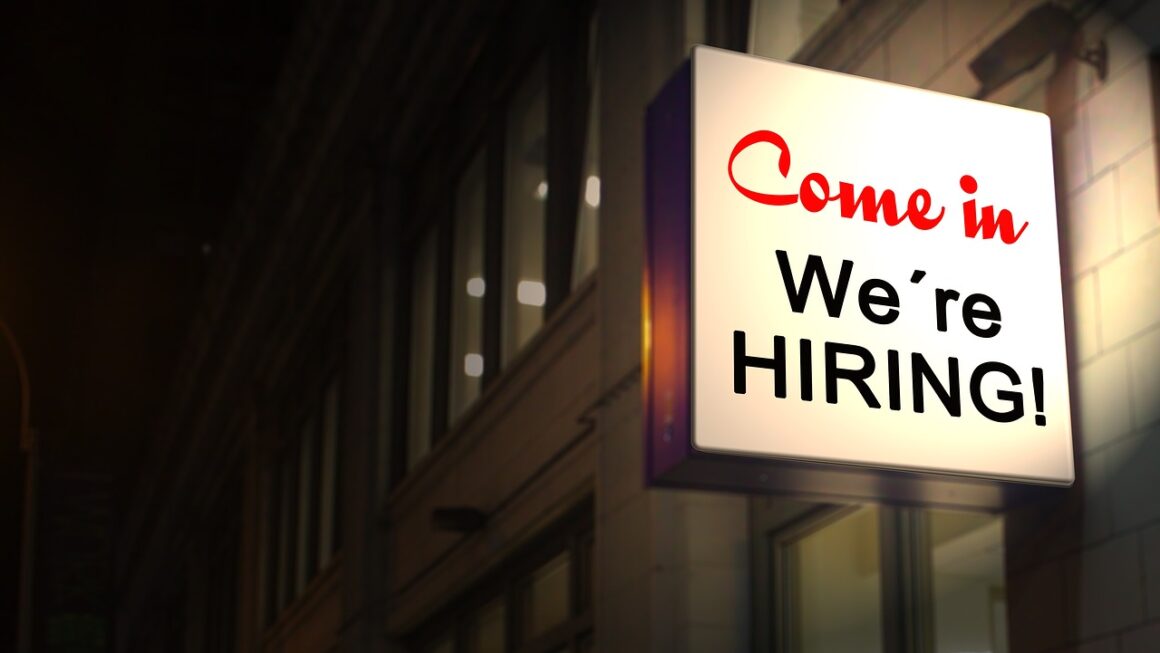The world of work is undergoing a seismic shift. Forget the rigid 9-to-5, the water cooler gossip, and the annual performance review as you know it. We’re stepping into an era defined by remote collaboration, artificial intelligence, and a relentless pursuit of work-life integration. This isn’t just a trend; it’s a fundamental reshaping of how we live and earn a living. This blog post will delve into the key aspects of the future of work, exploring the driving forces, emerging technologies, and strategies for navigating this exciting and sometimes uncertain landscape.
The Rise of Remote and Hybrid Work Models
The Pandemic’s Impact on Work Culture
The COVID-19 pandemic acted as a catalyst, accelerating the adoption of remote work at an unprecedented pace. What was once a perk is now a standard expectation for many.
- Businesses discovered the potential for cost savings through reduced office space.
- Employees experienced increased flexibility and improved work-life balance.
- Studies show that remote workers are often more productive, as distractions are minimized. For example, a Stanford study found that remote workers were 13% more productive than their in-office counterparts.
Embracing Hybrid Strategies
The future isn’t solely about fully remote work; hybrid models are gaining traction, offering a blend of in-office collaboration and remote flexibility.
- Example: A company might allow employees to work from home two or three days a week, reserving the remaining days for team meetings and collaborative projects.
- Hybrid approaches foster a sense of community while accommodating individual preferences.
- Companies need to invest in technology that supports seamless communication and collaboration between remote and in-office teams. Think of tools like Slack, Microsoft Teams, and Zoom.
Challenges and Solutions for Remote and Hybrid Teams
- Challenge: Maintaining team cohesion and preventing feelings of isolation.
Solution: Implement regular virtual social events, encourage team-building activities, and foster open communication channels.
- Challenge: Ensuring data security and compliance in a remote environment.
Solution: Invest in robust cybersecurity measures, implement clear data security policies, and provide training to employees on best practices.
- Challenge: Managing performance and productivity in a remote setting.
Solution: Focus on outcomes rather than hours worked, use project management tools to track progress, and provide regular feedback and coaching.
The Growing Influence of Artificial Intelligence (AI) and Automation
AI as a Collaborative Partner
AI is no longer a futuristic concept; it’s becoming an integral part of the workplace, augmenting human capabilities and automating repetitive tasks.
- Example: AI-powered chatbots can handle customer service inquiries, freeing up human agents to focus on more complex issues.
- AI can analyze vast amounts of data to provide insights and recommendations, assisting in decision-making.
- Machine learning algorithms can automate tasks such as data entry, report generation, and scheduling.
Upskilling and Reskilling for the AI-Driven Future
The rise of AI necessitates a focus on upskilling and reskilling to prepare the workforce for new roles and responsibilities.
- Employees need to develop skills in areas such as data analysis, AI programming, and human-machine interaction.
- Companies should invest in training programs and provide opportunities for employees to learn new skills.
- Individuals need to embrace lifelong learning and proactively seek out opportunities for professional development.
Ethical Considerations of AI in the Workplace
- Bias and Fairness: Ensuring that AI algorithms are free from bias and do not discriminate against certain groups.
Actionable Takeaway: Regularly audit AI systems for bias and implement measures to mitigate any identified issues.
- Job Displacement: Addressing the potential for job losses due to automation.
Actionable Takeaway: Focus on creating new roles that leverage human skills and creativity, and provide support for workers who are displaced by automation.
- Transparency and Accountability: Ensuring that AI systems are transparent and that there is clear accountability for their decisions.
Actionable Takeaway: Implement explainable AI (XAI) techniques to make AI decisions more transparent and understandable.
The Gig Economy and the Rise of Freelancing
Benefits and Drawbacks of the Gig Economy
The gig economy offers individuals the flexibility to work on their own terms, but it also presents certain challenges.
- Benefits:
Flexibility to choose projects and set your own hours.
Opportunity to earn income from multiple sources.
Ability to work from anywhere in the world.
- Drawbacks:
Lack of job security and benefits.
Income instability.
Need for self-discipline and strong time management skills.
Managing a Successful Freelance Career
- Building a Strong Online Presence: Create a professional website or portfolio showcasing your skills and experience.
- Networking and Building Relationships: Connect with potential clients and other freelancers through online communities and industry events.
- Managing Finances and Taxes: Track your income and expenses carefully, and set aside money for taxes. Consider using accounting software to simplify the process.
The Impact on Traditional Employment Models
The gig economy is influencing traditional employment models, with companies increasingly relying on freelancers and independent contractors. This trend is forcing businesses to rethink their talent acquisition strategies and adapt to a more flexible workforce.
- Example: Many companies are now using freelance platforms like Upwork and Fiverr to find skilled workers for specific projects.
Focus on Employee Well-being and Mental Health
Prioritizing Work-Life Integration
The traditional concept of work-life balance is evolving into work-life integration, where work and personal life are seamlessly blended.
- Example: Companies are offering flexible work schedules, unlimited vacation time, and on-site childcare to support employees’ personal lives.
- Employees are encouraged to set boundaries and prioritize their well-being.
Addressing Mental Health in the Workplace
Mental health is becoming a top priority for employers, as they recognize the impact of stress and burnout on employee productivity and retention.
- Companies are offering mental health resources such as counseling services, mindfulness programs, and stress management workshops.
- Creating a culture of open communication and support where employees feel comfortable discussing their mental health concerns.
Creating a Supportive and Inclusive Work Environment
- Promote Diversity and Inclusion: Implement policies and programs that promote diversity and inclusion at all levels of the organization.
- Encourage Open Communication: Foster a culture of open communication where employees feel comfortable sharing their ideas and concerns.
- Provide Opportunities for Growth and Development: Invest in employee training and development programs to help them grow and advance in their careers.
Conclusion
The future of work is dynamic and multifaceted, shaped by technological advancements, evolving workforce demographics, and a growing emphasis on employee well-being. By embracing remote and hybrid work models, leveraging AI and automation responsibly, adapting to the rise of the gig economy, and prioritizing employee well-being, individuals and organizations can thrive in this new era. The key is to be adaptable, embrace lifelong learning, and prioritize human connection in an increasingly digital world. The future of work is not just about what we do, but how we do it, and the impact we have along the way.




